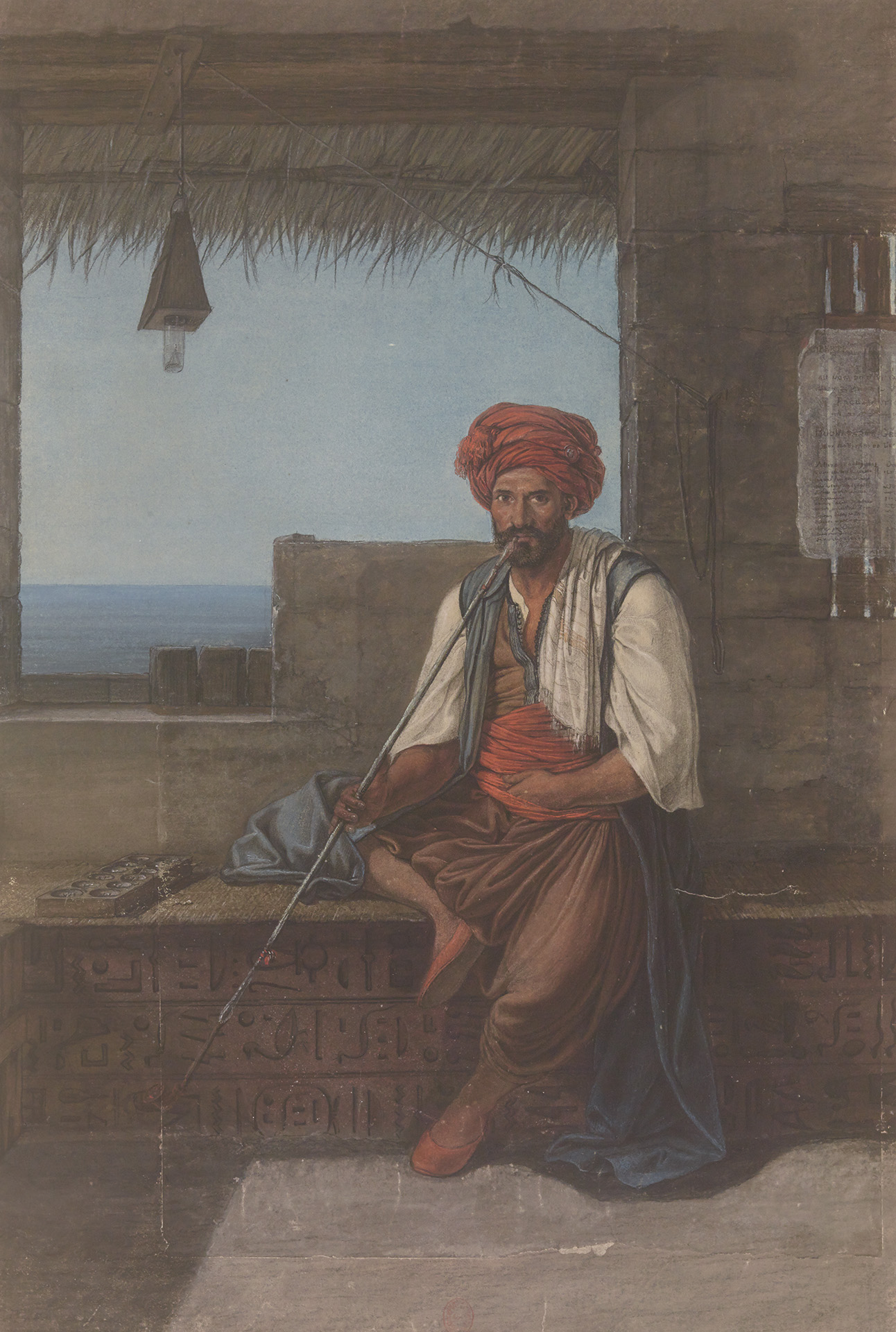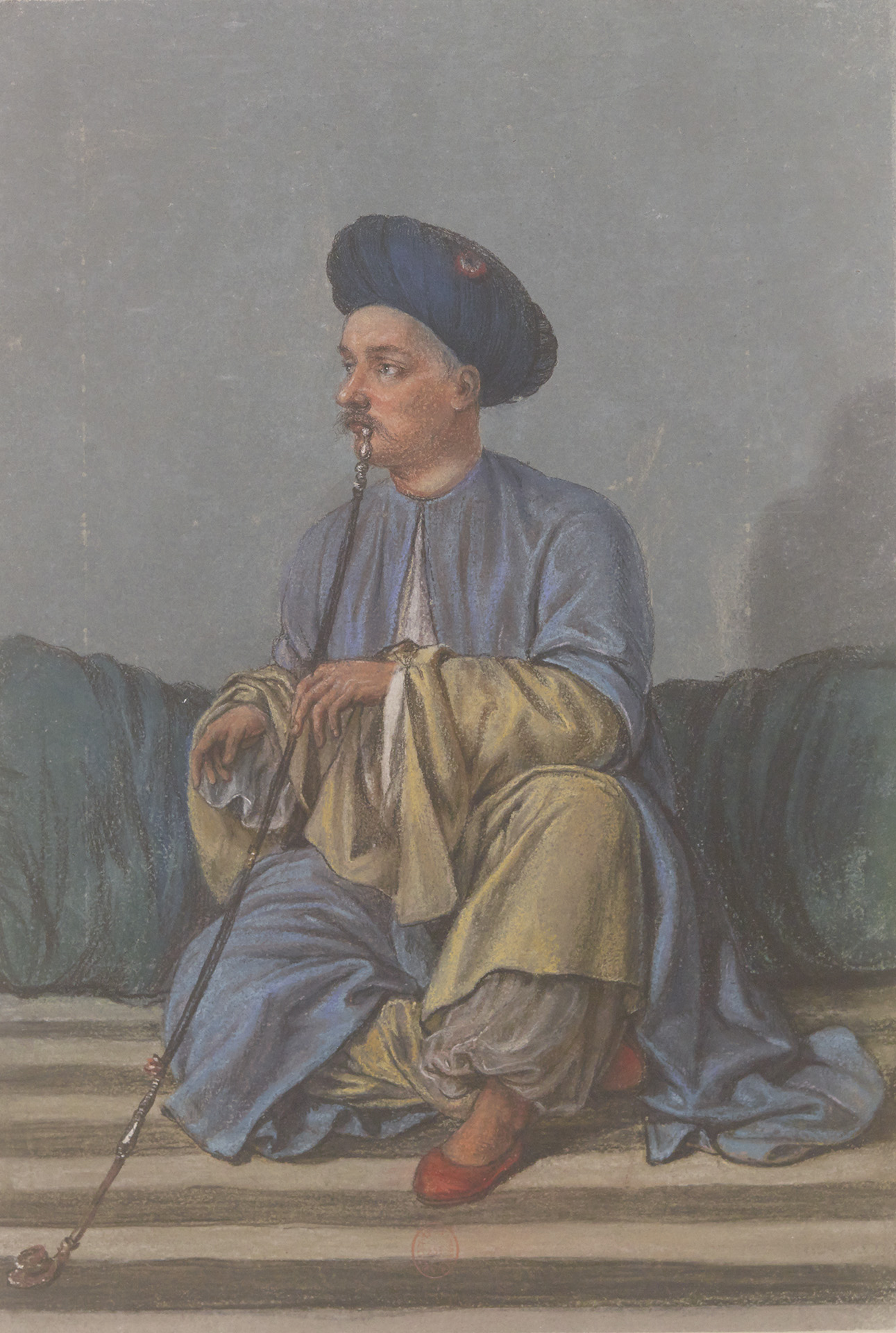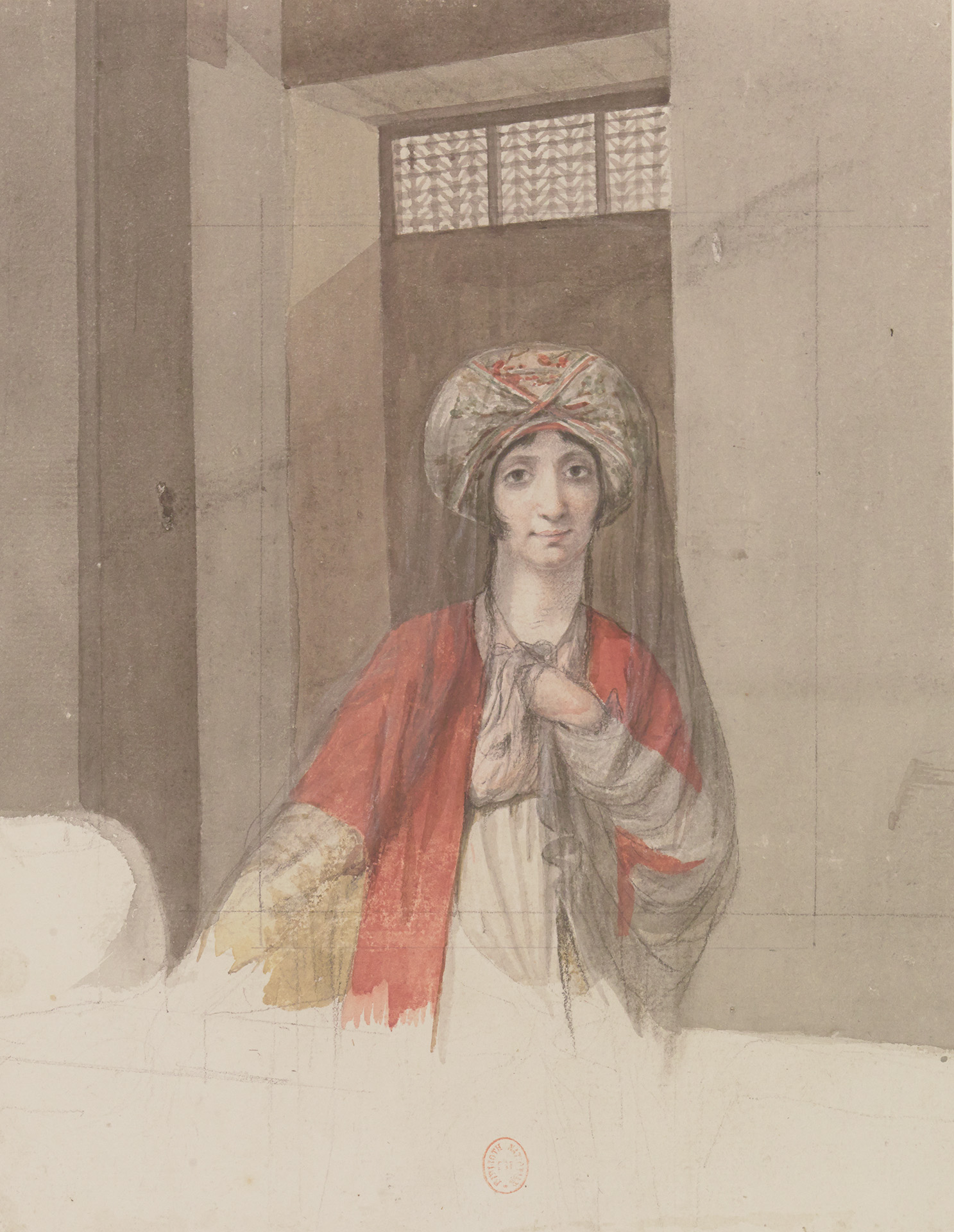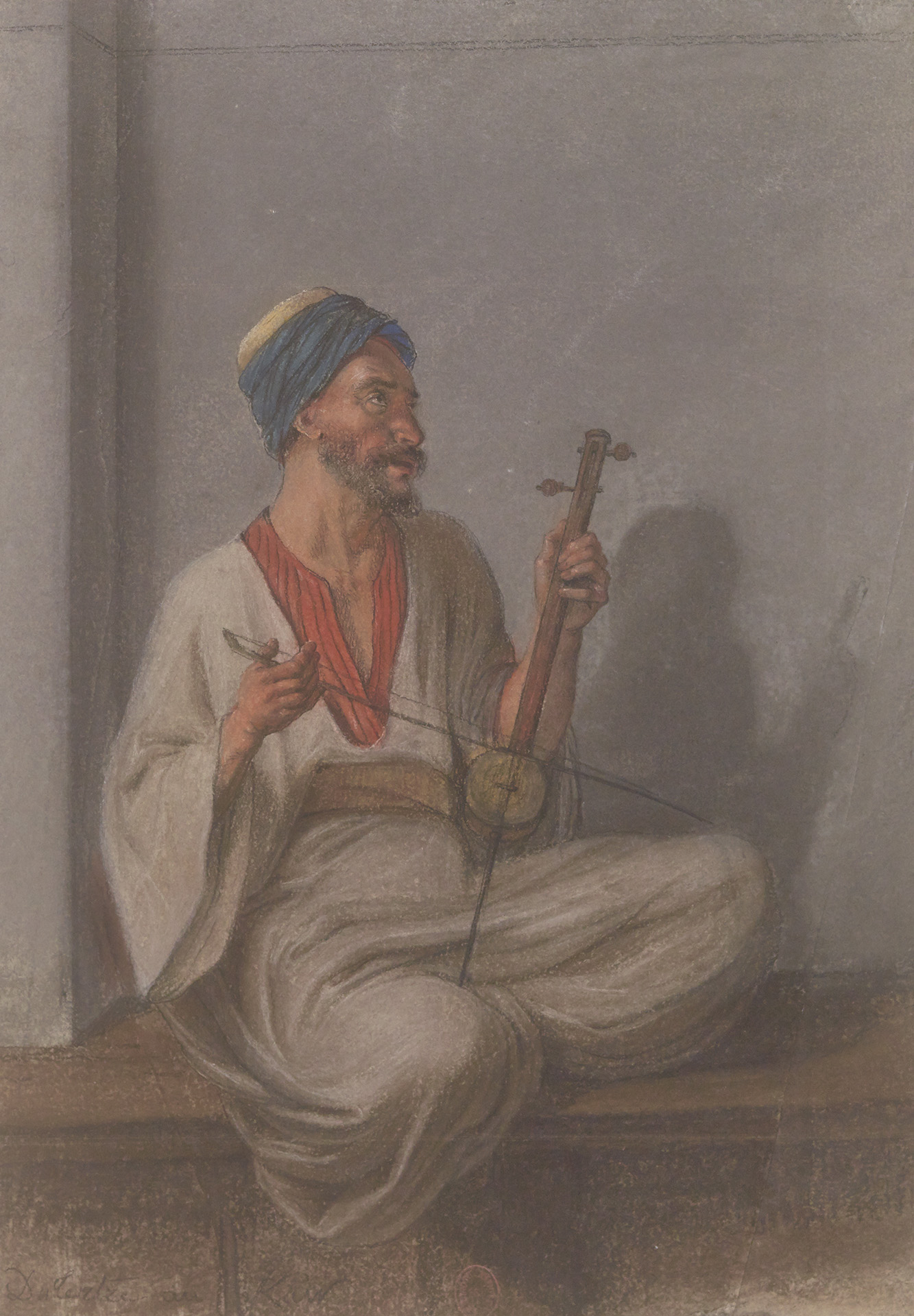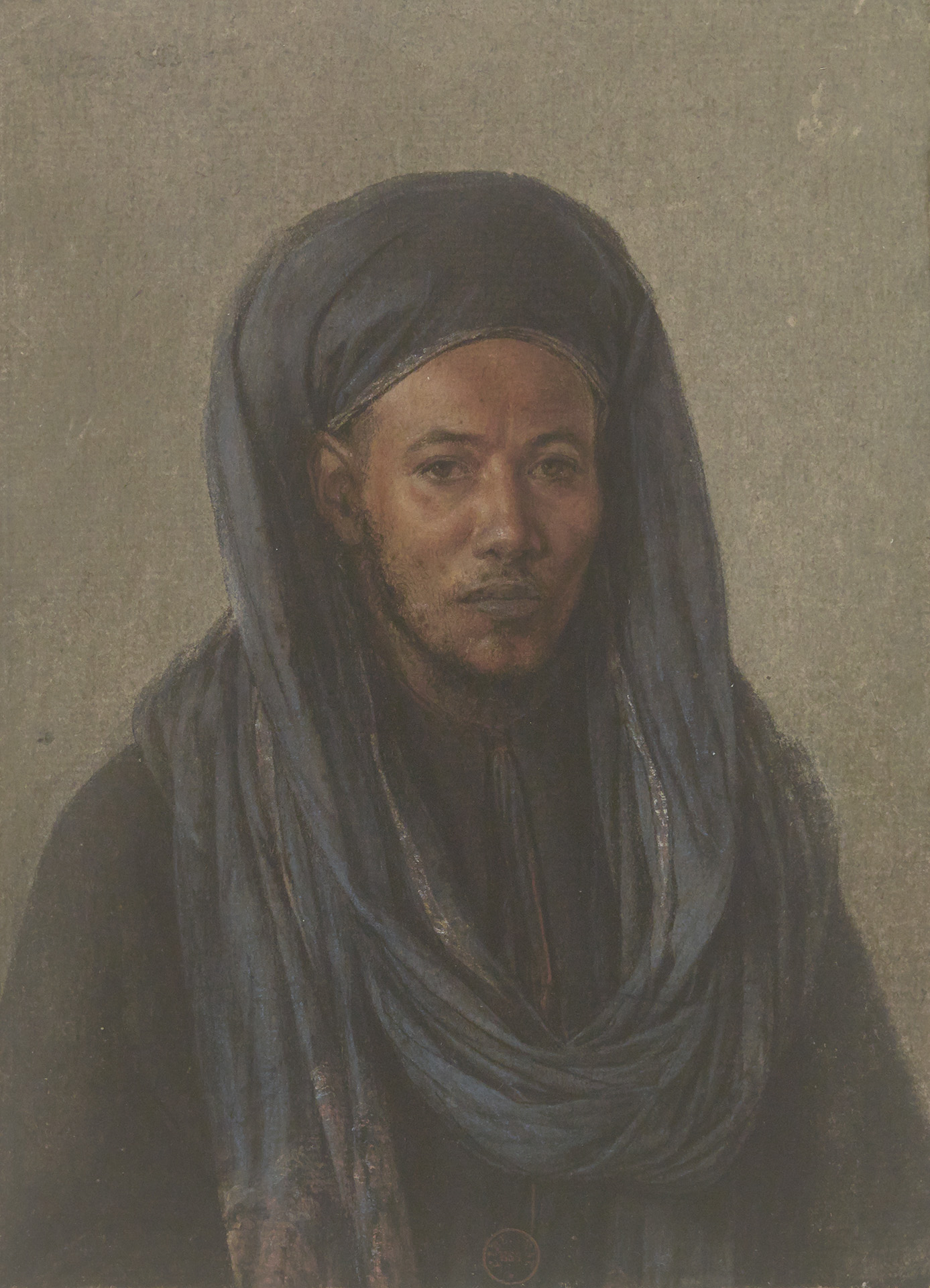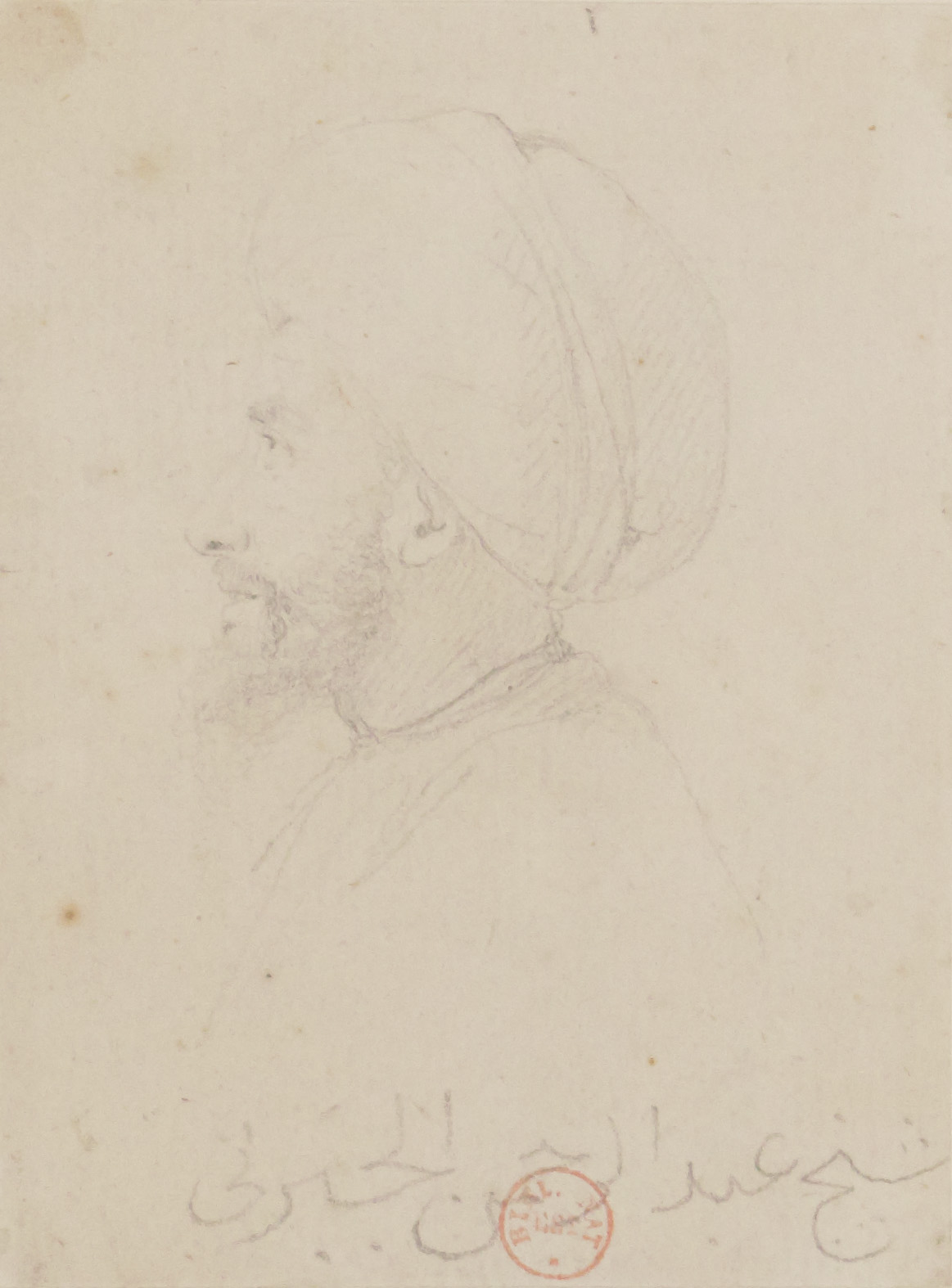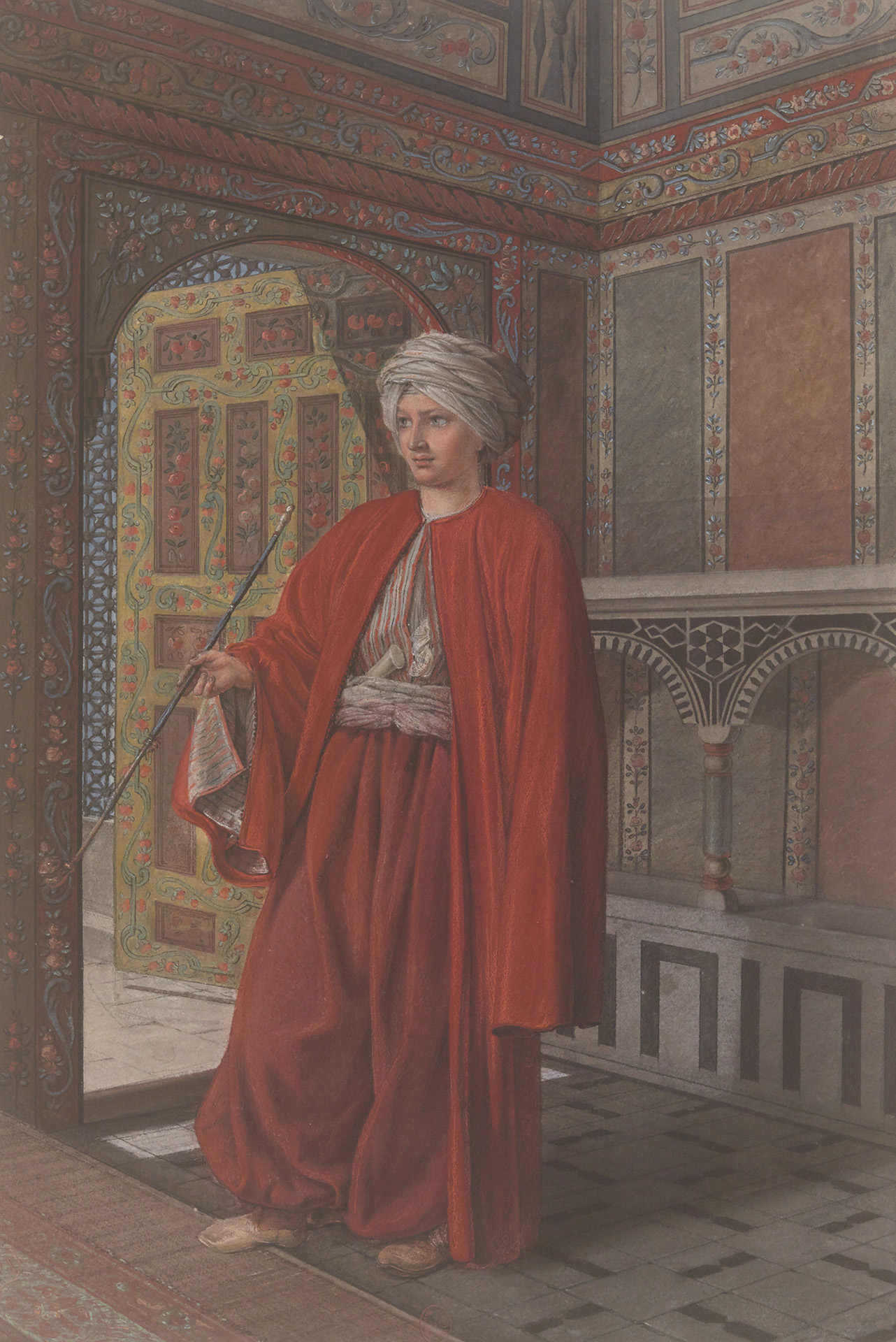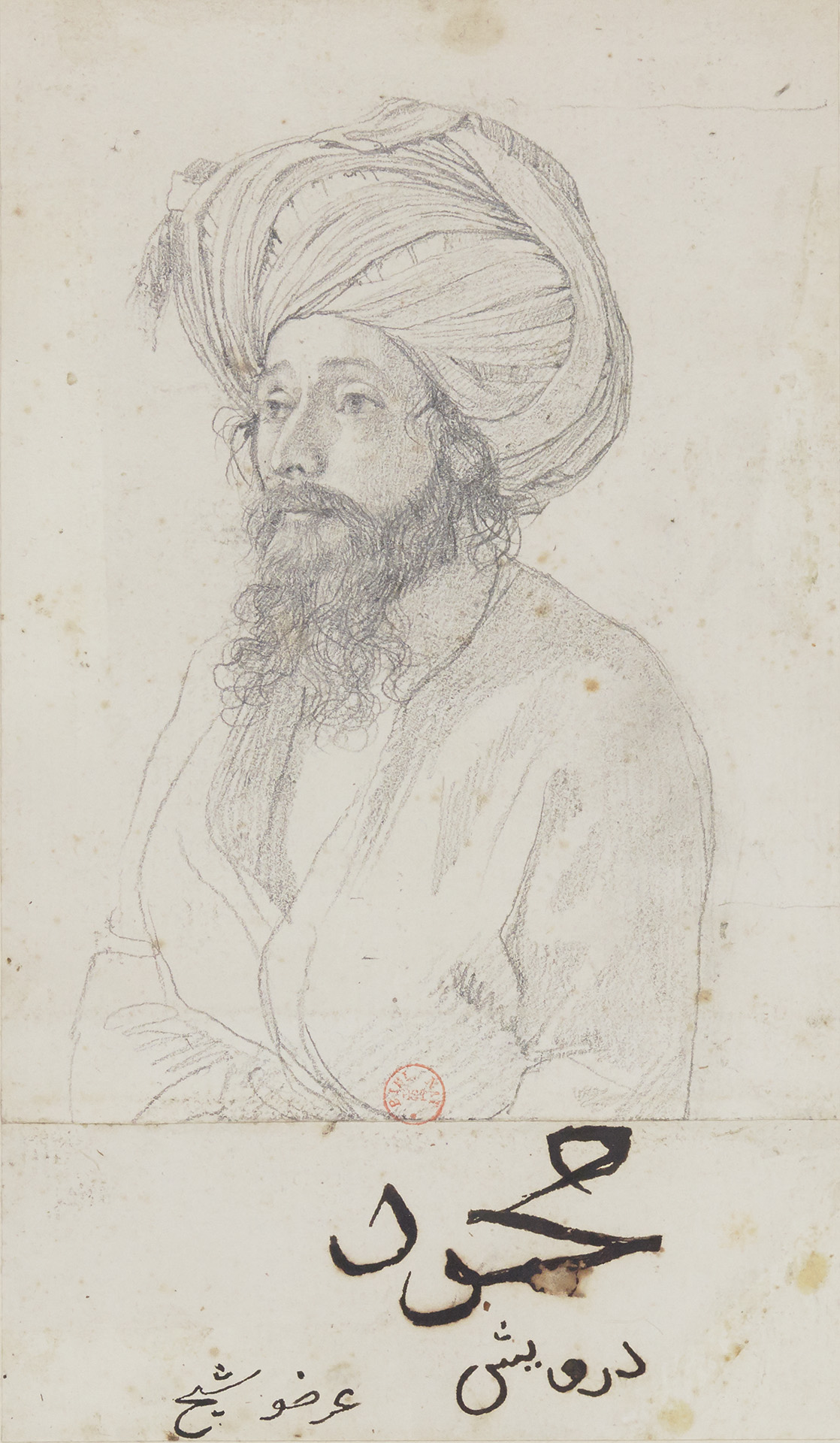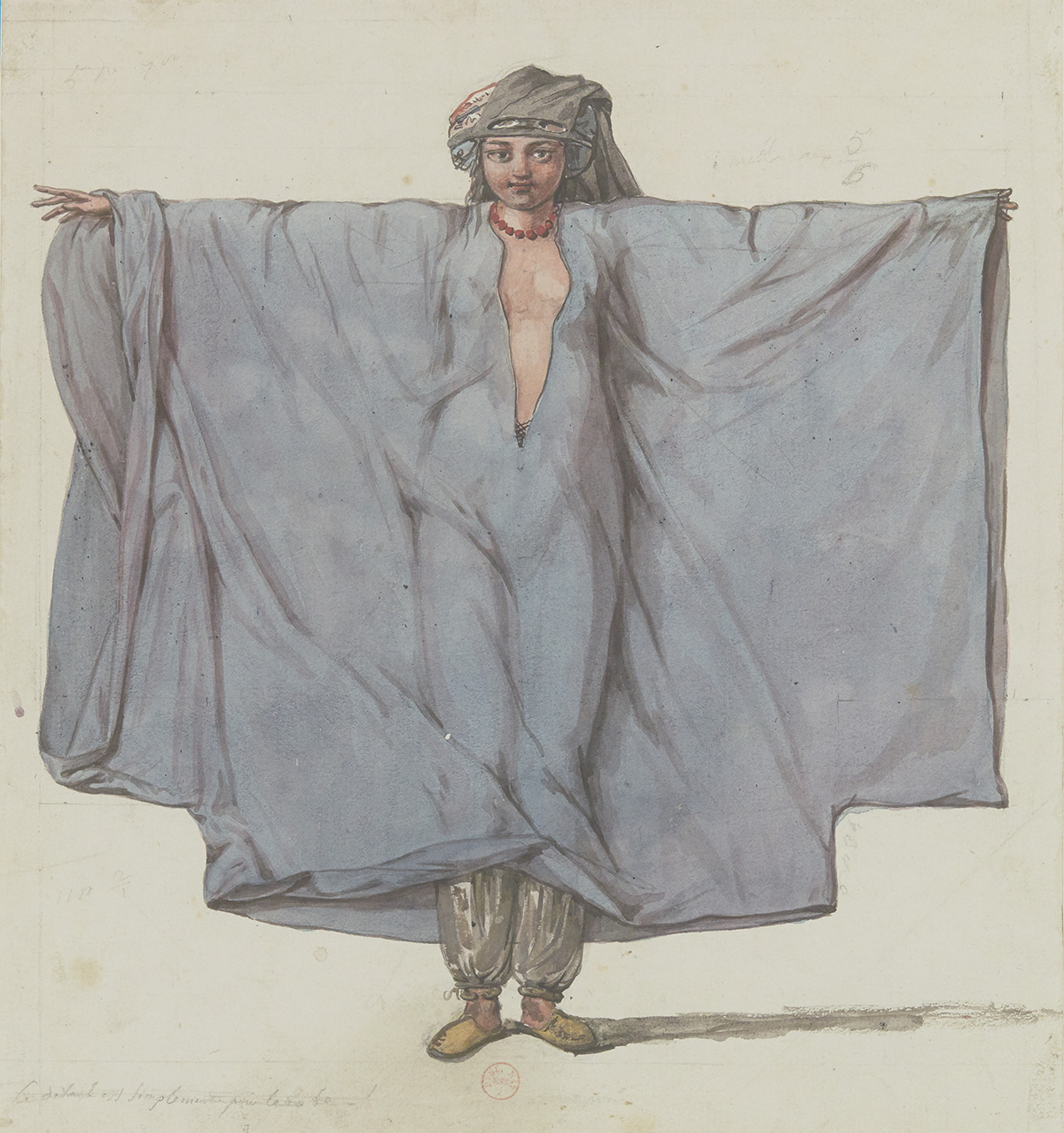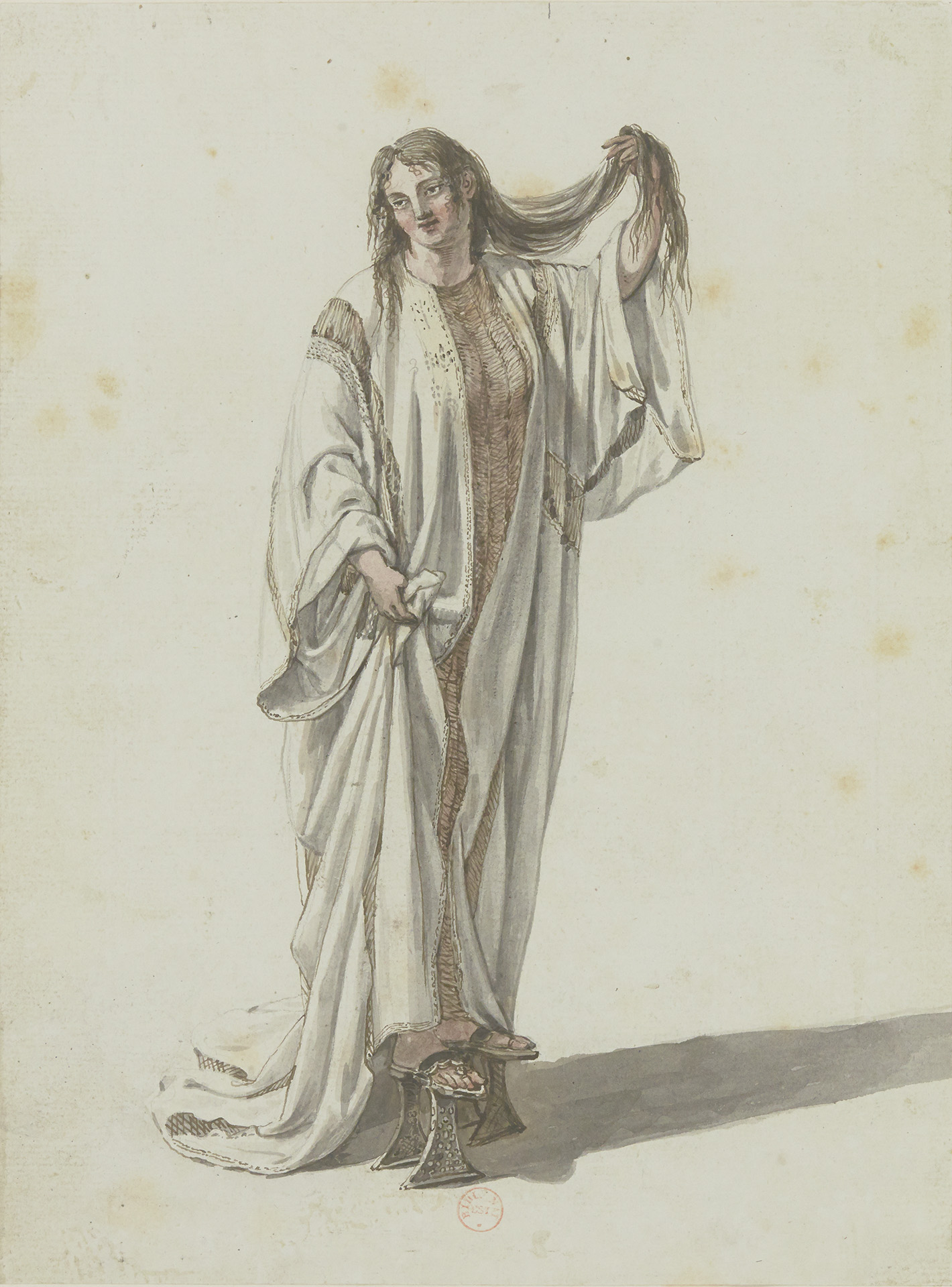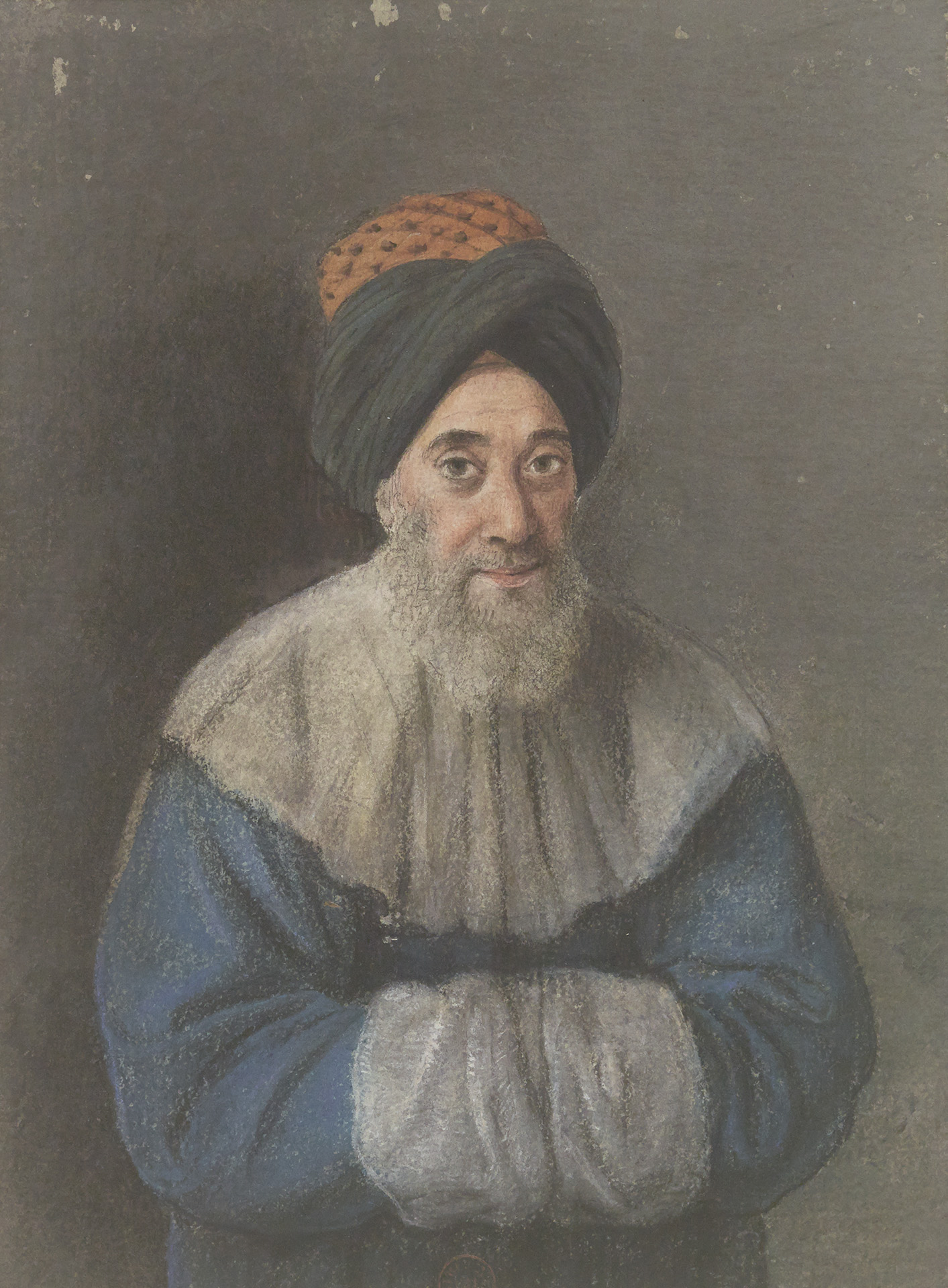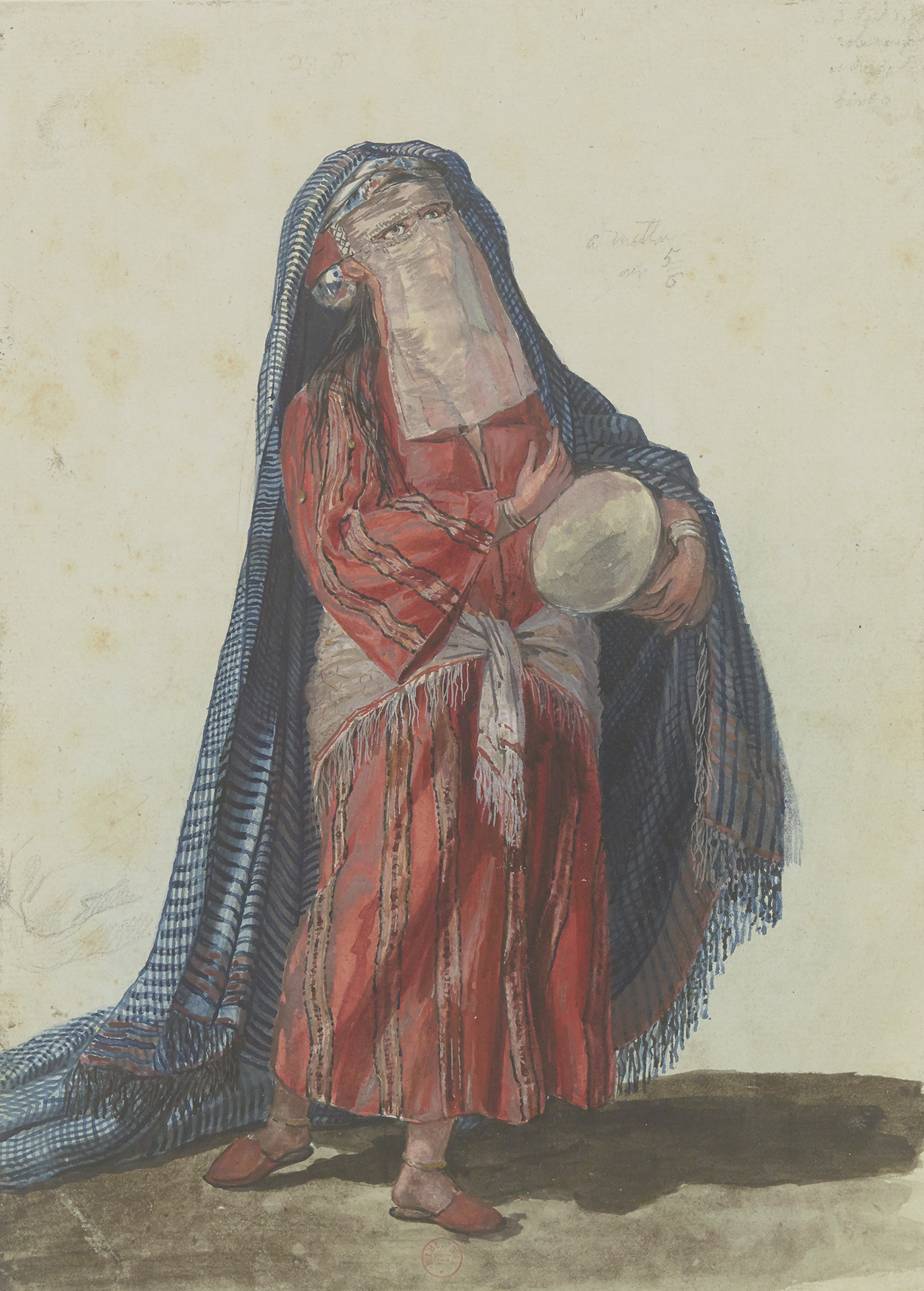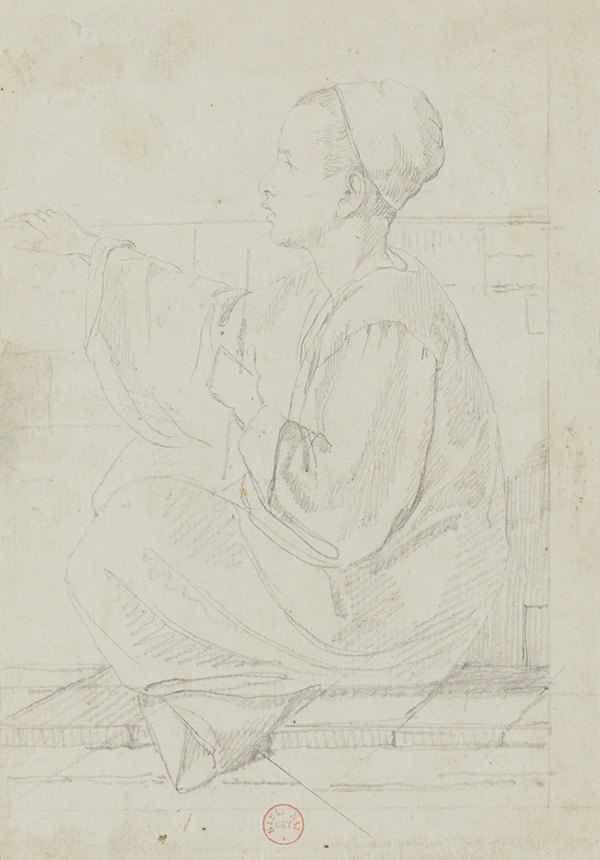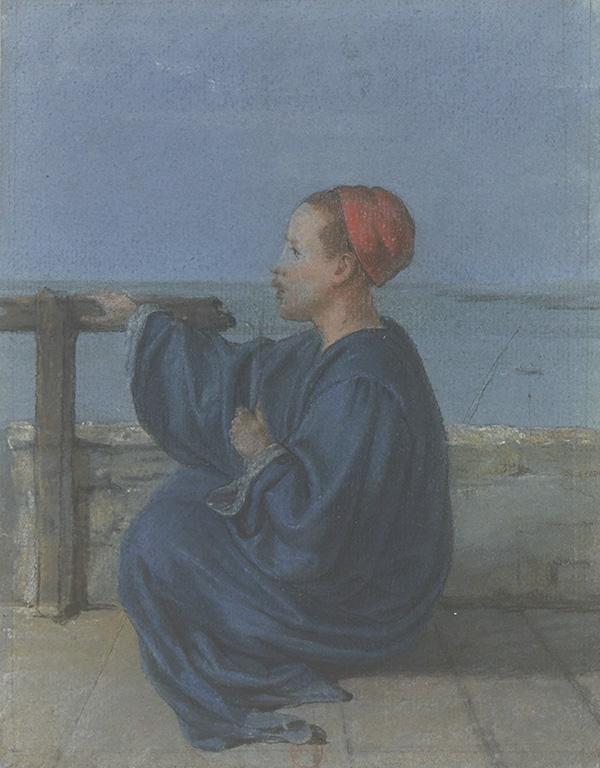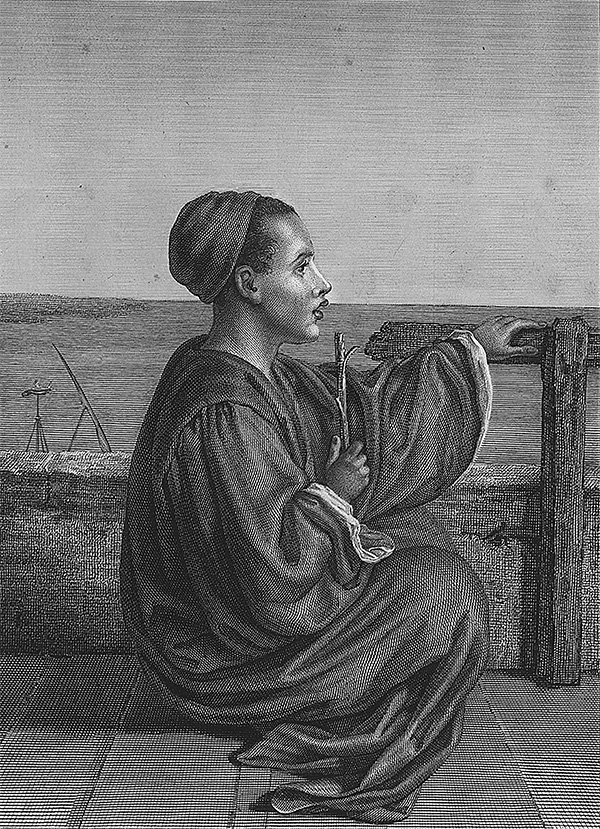Daily life
Cisterns Hammams Ottoman houses Cemeteries and mausoleums Mosques Bazaars and streets Alexandrian portraits
“A sailor of Alexandria”, pastel and black chalk, André Dutertre, Description de l’Égypte, État moderne, Planches, Vol. 2, pl. D.2
“Inhabitant of Damascus”, pastel and black chalk, André Dutertre, Description de l’Égypte, État moderne, Planches, Vol. 2, pl. E.5
“Frankish woman”, pastel, black chalk and watercolour, André Dutertre, Description de l’Égypte, État moderne, Planches, Vol. 2, pl. F.3
“The violon player”, pastel and black chalk, André Dutertre, Description de l’Égypte, État moderne, Planches, Vol. 2, pl. E.4
“Bishop from Abyssinia”, pastel and black chalk, André Dutertre, Description de l’Égypte, État moderne, Planches, Vol. 2, pl. F.2
« Portrait of Abd el-Rahman el-Gabarti (1) ». pencil, André Dutertre, Description de l’Égypte, État moderne, Planches, tome 2, pl. I.9
“A Mamluk”, pastel and black chalk, André Dutertre, Description de l’Égypte, État moderne, Planches, Vol. 2, pl. D.1
“Portrait of Sheikh Mahmoud Darwish”, pencil, André Dutertre, Description de l’Égypte, État moderne, Planches, Vol. 2, pl. I.3
“Common robe”, manuscript text: “This detail is simply for the robe”, watercolour, ink and black chalk, André Dutertre, Description de l’Égypte, État moderne, Planches, tome 2, pl. LL.5
“Bath tunic”, watercolour, pen and black chalk, André Dutertre, Description de l’Égypte, État moderne, Planches, tome 2, pl. MM.1
“Sheikh Sadat”, pastel and black chalk, André Dutertre, Description de l’Égypte, État moderne, Planches, tome 2, pl. E.3
“Almah in red silk robe”, watercolour, ink and black chalk, André Dutertre, Description de l’Égypte, État moderne, Planches, tome 2, pl. LL.1
Types of drawing
Pencil and black pencil drawing
The illustrator used a pencil with a natural graphite or artificial lead (Conté crayon).
Pen and ink drawing
The illustrator used a bird’s feather, most often goose, dipped in ink. The drawing would be strictly linear, and any shading rendered by hatching.
Black chalk
This material is a form of shale known as ampelite and is used within a pencil or as a rectangular crayon for sketching or more detailed drawing.
Pastel
This is a colour stick composed of pigments and an aqueous calcium carbonate paste.
Watercolours
Water soluble paint made from gum arabic and transparent pigments.
Ink wash
A technique in which watercolour or Indian ink is diluted to vary the intensity of the colours.
“Alexandrian child”: pencil; pastel and black chalk; intaglio engraving. André Dutertre, illustrator, Jacques Lavallée, engraver, Description de l’Égypte, État moderne, Planches, Vol. 2, pl. F.1
Types of engraving
Intaglio
Originally referring to burin engraving, now covers all the processes of incising a metal plate, including chalcography (on copper), where the sunken area holds the ink.
Etching
Engraving process that uses a strong acid to cut into a metal surface on which a design has been incised.
(1) Abd el-Rahman el-Gabarti (1754-1824) was a member of the Ulama, a religious elite of scholars from Al-Azhar, where he had studied. During the French occupation, he met many of the expedition’s officers and scientists. He was a remarkable historian and is particularly well known for the chronicle he wrote during French rule. His book The Marvellous Compositions of Biographies and Events is one of the most important sources on the history of Ottoman Egypt.

